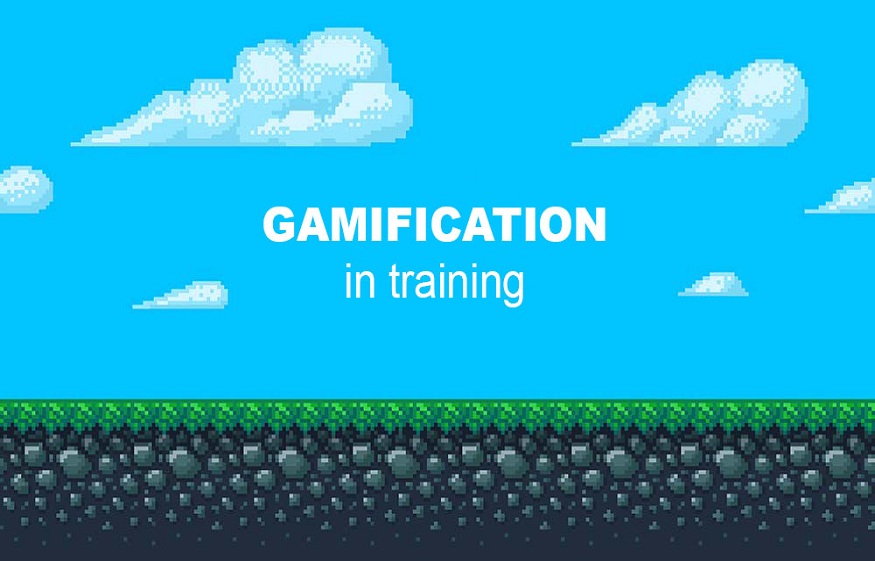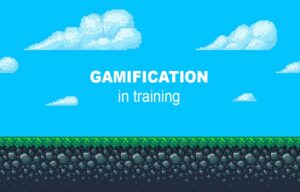Level Up Your Teaching: How to Incorporate a Gamification Platform into the Classroom
9 min read
Are you tired of seeing glazed-over eyes and disinterested faces in your classroom? Have you ever wished there was a way to make learning exciting and engaging for your students? Well, look no further! In today’s blog post, we’re going to dive into the world of the gamification platform and discover how they can revolutionise your teaching. Get ready to level up your classroom as we explore the incredible benefits and practical tips for incorporating these game-like elements into your lessons. Say goodbye to boredom and hello to an educational adventure like never before!
Introduction: Why Gamification in Teaching?
Gamification in teaching refers to the application of game-like elements and mechanics in educational settings to engage and motivate students in their learning process. With the rise of technology, traditional teaching methods may no longer be enough to keep students engaged and motivated. This is where gamification comes into play, offering a fresh approach to education that taps into students’ natural inclination towards games.
One of the main reasons for incorporating gamification in teaching is its ability to increase student engagement. Games are inherently enjoyable and immersive, making them a powerful tool for capturing students’ attention. By incorporating game elements such as points, levels, challenges, and rewards into lessons, teachers can create a more exciting and interactive learning experience that appeals to students’ interests.
Moreover, gamification has been proven to enhance motivation among students. In traditional classrooms, it is not uncommon for some students to feel disengaged or unmotivated due to factors like lack of interest or difficulty grasping concepts. However, with gamified learning experiences, students are motivated by the opportunity to earn points, level up, or unlock rewards. These incentives provide instant gratification and serve as tangible markers of progress for students.
Another benefit of gamification in teaching is its ability to promote active learning. Instead of passively absorbing information from lectures or textbooks, games require active participation from players who must make decisions and solve problems within the game’s context. This promotes critical thinking skills and allows for hands-on practice of concepts being taught.
Incorporating gamification also allows for personalised learning experiences tailored to individual student needs. With features such as leaderboards or progress tracking systems within a gamified platform, teachers can easily monitor each student’s progress and identify areas where they may need additional support or challenges.
Additionally, gamification can help create a more positive classroom culture. Games often involve teamwork and collaboration, which can foster a sense of community among students. Through friendly competition and cooperation, students can learn from each other and develop important social skills.
The use of gamification in teaching has numerous benefits for both teachers and students. By tapping into students’ natural inclination towards games, teachers can create a more engaging, motivating, and personalised learning experience that promotes active learning and a positive classroom culture. With the continued advancements in technology and gamification tools, we can expect to see an even greater integration of gaming elements in education in the future.
Understanding Gamification: Definition and Benefits
Gamification refers to the use of game elements and mechanics in non-game contexts, such as education. It is a relatively new approach to teaching that has gained popularity in recent years due to its ability to engage and motivate students.
At its core, gamification relies on the principles of game design to create an immersive learning experience for students. This includes incorporating elements such as points, levels, challenges, rewards, and leaderboards into the classroom setting. These features are designed to tap into students’ natural desire for competition, achievement, and progress.
The benefits of incorporating gamification into the classroom are numerous. Firstly, it increases student engagement by making learning more interactive and enjoyable. By adding a sense of playfulness to lessons, students are more likely to participate actively in their own learning process.
Moreover, gamification can also help teachers better understand their students’ strengths and weaknesses. Through various game-based activities and assessments, teachers can gather valuable data on how each student learns best. This information can then be used to personalise instruction for individual students or groups.
Gamification also promotes a growth mindset among students by encouraging them to take risks and learn from failure. In traditional classrooms, mistakes are often seen as negative experiences that lead to lower grades. However, in a gamified environment where failure is part of the learning process, mistakes become opportunities for growth rather than setbacks.
Additionally, incorporating gamification into teaching can foster collaboration among students as they work towards common goals or compete against one another in teams. This not only improves social skills but also encourages peer-to-peer learning and support within the classroom.
Furthermore, using a gamified platform allows teachers to track student progress in real-time. With access to comprehensive data analytics on student performance, educators can quickly identify struggling learners and provide targeted interventions or additional support where needed.
Understanding the definition of gamification is essential before implementing it into teaching. By incorporating game elements into the classroom, teachers can reap numerous benefits such as increased engagement, personalised learning, fostering a growth mindset, promoting collaboration, and better tracking of student progress. With these advantages in mind, it’s no wonder why gamification has become a popular approach for educators looking to level up their teaching methods.
Choosing the Right Platform: Factors to Consider
When it comes to incorporating a gamification platform into your classroom, choosing the right platform is crucial. With so many options available, it can be overwhelming to determine which one will best suit your teaching style and student needs. In this section, we will discuss some important factors to consider when selecting a gamification platform for your classroom.
1. Educational Goals and Objectives
Before diving into any specific platforms, it is important to first consider your educational goals and objectives for using gamification in the classroom. Are you looking to improve student engagement? Increase motivation? Enhance learning outcomes? Different platforms may have different features or focus on particular aspects of gamification, so knowing what you want to achieve can help narrow down your choices.
2. Age Appropriateness
Another factor to consider is the age range of your students. Some platforms may be more suitable for younger learners with simpler game mechanics, while others may cater to older students with more complex challenges and tasks. It’s essential to choose a platform that aligns with your students’ developmental levels as well as their interests.
3. Ease of Use
As an educator, you already have a lot on your plate; therefore, opting for a user-friendly platform should be a top priority. A good gamification platform should have clear instructions and easy navigation for both teachers and students alike. It should also provide tools for tracking progress and managing rewards without too much effort.
4. Customizability
Every classroom is unique, and what works well in one setting may not necessarily work in another. Therefore, having the ability to customise the game elements such as themes, point systems, levels/challenges can make all the difference in creating an engaging experience for your students.
5.Learning Style Suitability
It’s important also to take into account how different types of learners engage with games differently—visual learners may prefer more graphics-based interfaces while auditory learners might respond better to narration or sound effects. Some platforms may even offer options for personalised learning, allowing students to choose their preferred ways of interacting with the game.
6. Cost
While many gamification platforms offer free trials or basic versions, some may come at a cost. Consider your budget and whether the platform offers value for money before committing to a subscription or purchase.
By taking these factors into consideration, you can make an informed decision on which gamification platform best suits your classroom needs and maximises its potential impact on student learning and engagement. Remember, it is essential to regularly evaluate the effectiveness of your chosen platform and be open to trying out new ones if necessary to continuously improve upon your teaching methods.
How to Integrate Gamification into the Classroom
Gamification, or the use of game elements and mechanics in a non-game context, has become increasingly popular in education as a way to engage and motivate students. By incorporating elements such as points, levels, challenges, and rewards into their lessons, teachers are able to create a more dynamic and interactive learning experience for their students. In this section, we will discuss how educators can successfully integrate gamification into their classrooms.
- Start with clear learning objectives: Before implementing any gamification platform or strategy in the classroom, it is important for teachers to have a clear understanding of what they want their students to learn. This will help them choose appropriate game elements that align with the curriculum and ensure that the games serve an educational purpose.
- Choose the right platform: There are many different gamification platforms available for educators to choose from. Some popular options include Classcraft, Kahoot!, and Quizlet. It is crucial for teachers to research and test out different platforms to find one that best fits their teaching style and classroom needs.
- Introduce the concept gradually: Instead of overwhelming students with multiple new games all at once, it is helpful to introduce one game element at a time. For example, start by using points as a way to track progress before introducing levels or challenges.
- Create meaningful rewards: Rewards are an important aspect of gamification as they provide motivation for students to achieve goals within the game. However, it is important for these rewards to be meaningful and relevant to the students’ interests or learning goals. This could be anything from extra credit points or privileges in the classroom.
- Foster friendly competition: Gamification can also promote healthy competition among students which can increase engagement and drive performance. Teachers should encourage friendly competition rather than pitting students against each other by creating teams or allowing them to compete against themselves through self-improvement challenges.
- Use data tracking tools: Many gamification platforms offer data tracking tools that allow teachers to monitor students’ progress and identify areas where they may need additional support. This can help teachers adjust their lessons or provide individualised instruction for struggling students.
- Reflect and adapt: Gamification is not a one-size-fits-all approach, and it is important for teachers to reflect on its effectiveness in their classroom. They should regularly gather feedback from students and make adjustments as needed to ensure the games are enhancing learning.
Incorporating gamification into the classroom can bring a sense of fun and excitement to traditional learning methods. By following these tips, educators can successfully integrate gamification into their teaching strategies and create a more engaging and effective learning environment for their students.
Conclusion: The Power of Gamification in Education
In today’s world, where technology and digital platforms have become an integral part of our daily lives, it is only natural to adapt these tools into the education sector as well. One such tool that has gained immense popularity in recent years is gamification. By incorporating elements of gaming into teaching methods, educators can create a more engaging and interactive learning experience for students.
The use of gamification in education has proven to be highly effective in improving student motivation, participation, and overall academic performance. This approach leverages the natural human tendency towards competition and rewards to encourage students to actively engage with course materials. By setting up challenges, levels, and points systems within a game-based platform, students are motivated to complete tasks and achieve their goals.
Moreover, gamification also caters to different learning styles as it presents information in various formats such as visuals, audio cues, quizzes, challenges etc., making it easier for students with different strengths and weaknesses to grasp concepts effectively. This personalised approach allows students to learn at their own pace while still being engaged and motivated.
Another benefit of incorporating gamification into education is its ability to foster a growth mindset among students. In traditional classrooms where failure can often lead to discouragement or even demotivation among students, gamified learning provides a safe space for them to fail without any negative consequences. Students are encouraged to keep trying until they succeed by earning points or unlocking new levels each time they attempt a task.
Furthermore, introducing elements of competition through leaderboards or team-based challenges can improve social interaction among classmates while also promoting teamwork skills. This not only enhances the classroom environment but also prepares students for real-world situations where collaboration is key.
The power of gamification in education cannot be denied. It revolutionises traditional teaching methods by creating an interactive and engaging learning experience for students while catering to their individual needs and preferences. By incorporating elements of gaming into the curriculum, educators can tap into the potential of technology to create a more effective and enjoyable learning journey for their students. So why not level up your teaching by incorporating a gamification platform in your classroom today?







